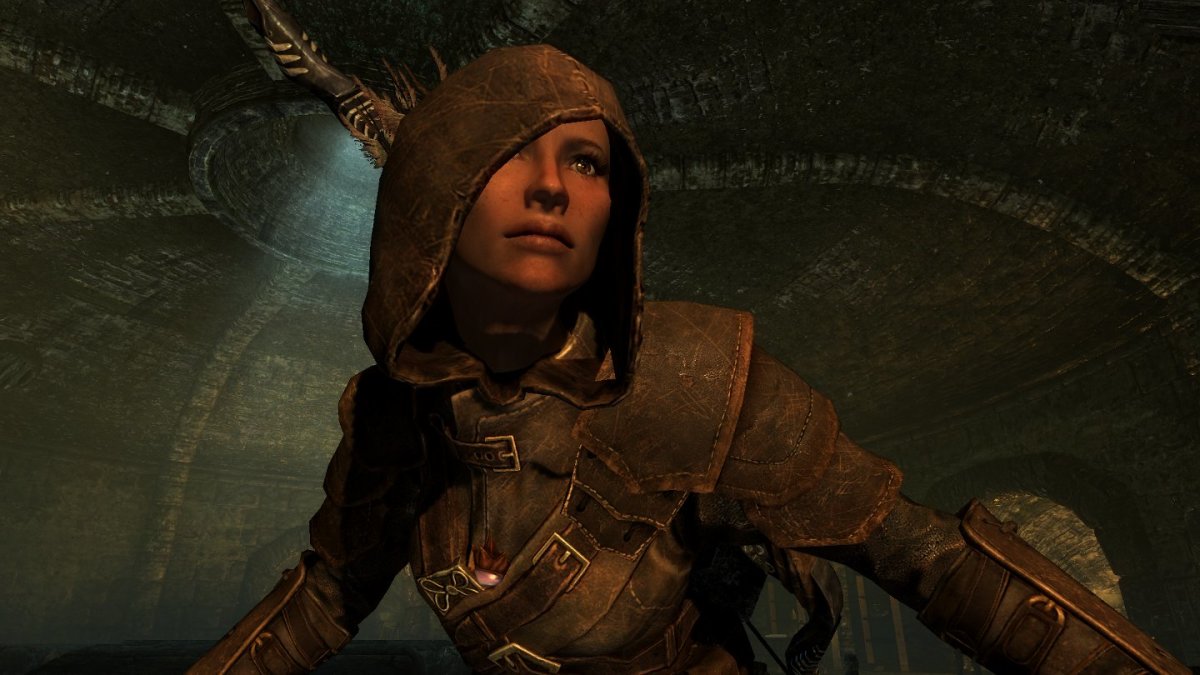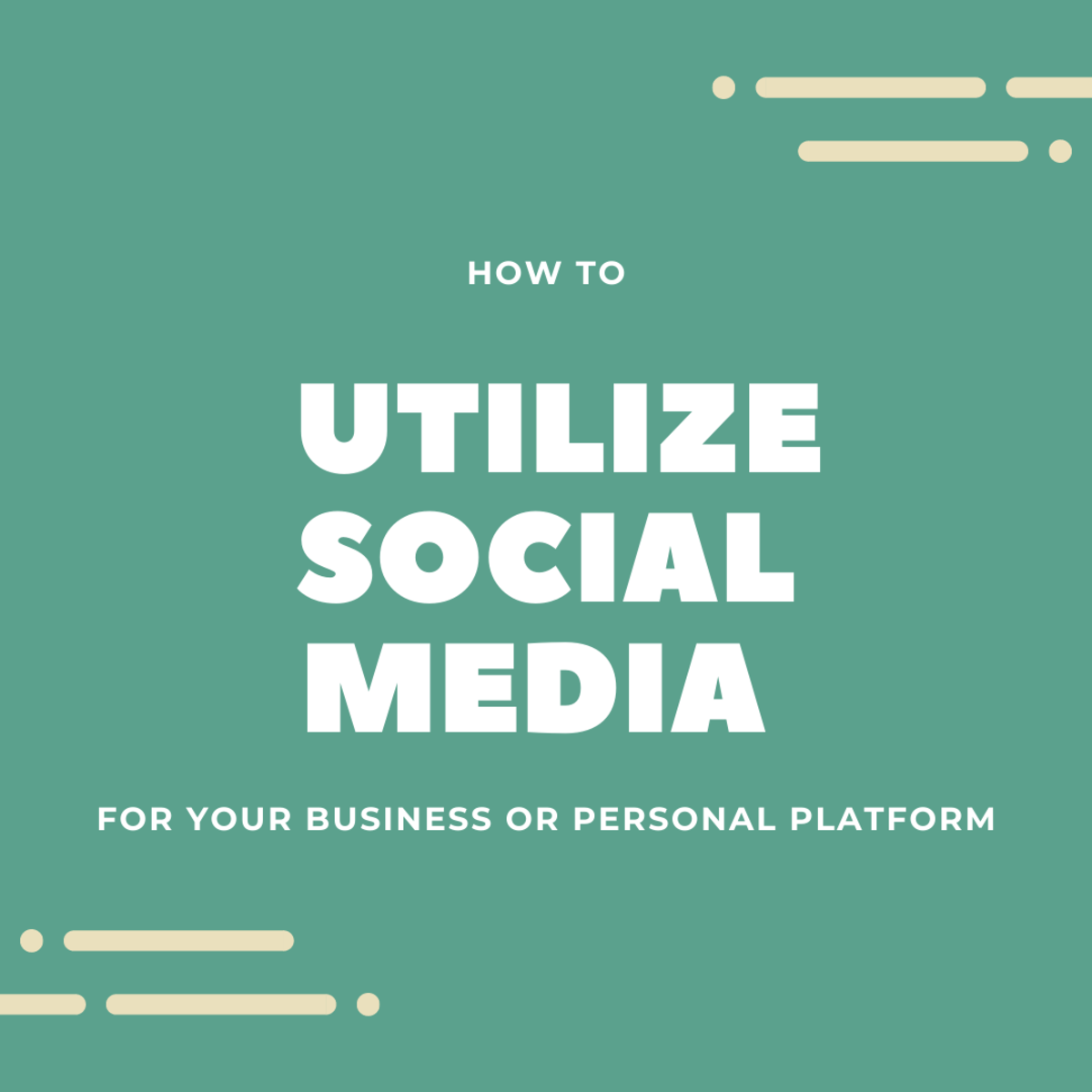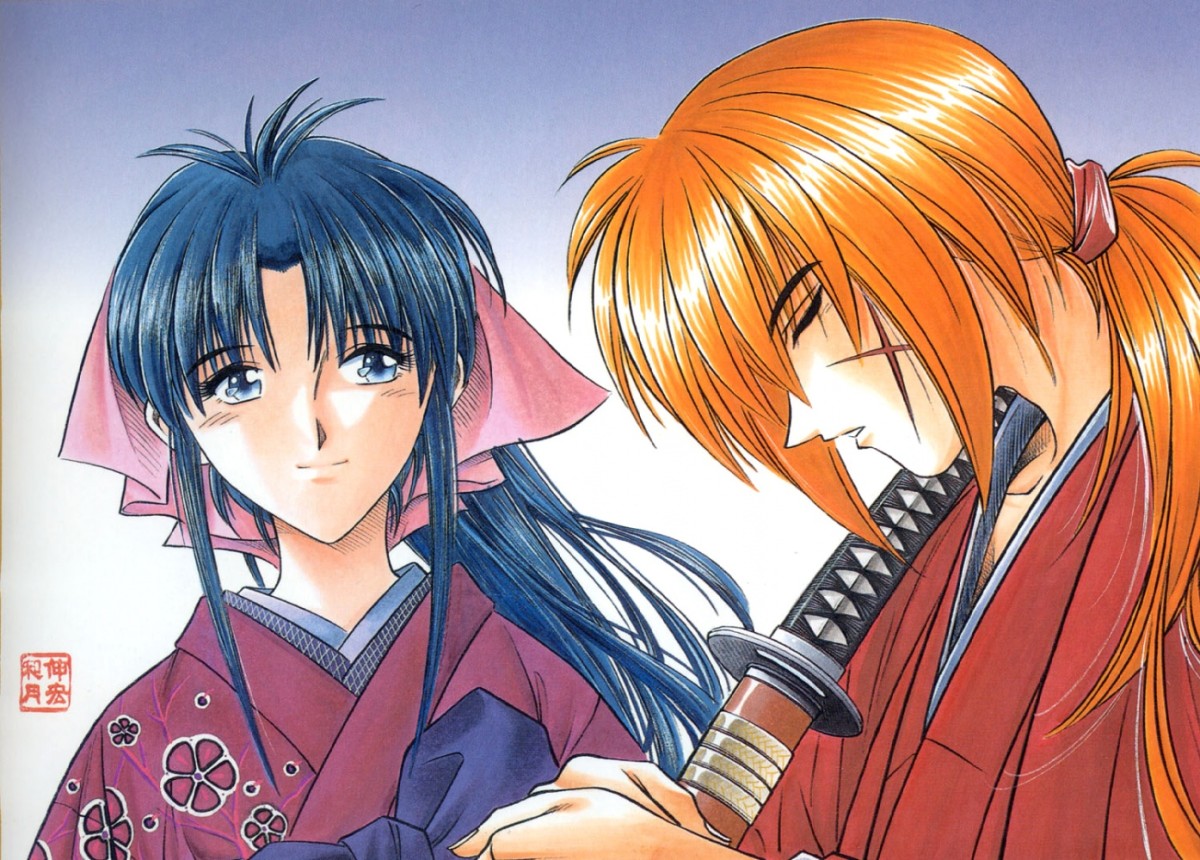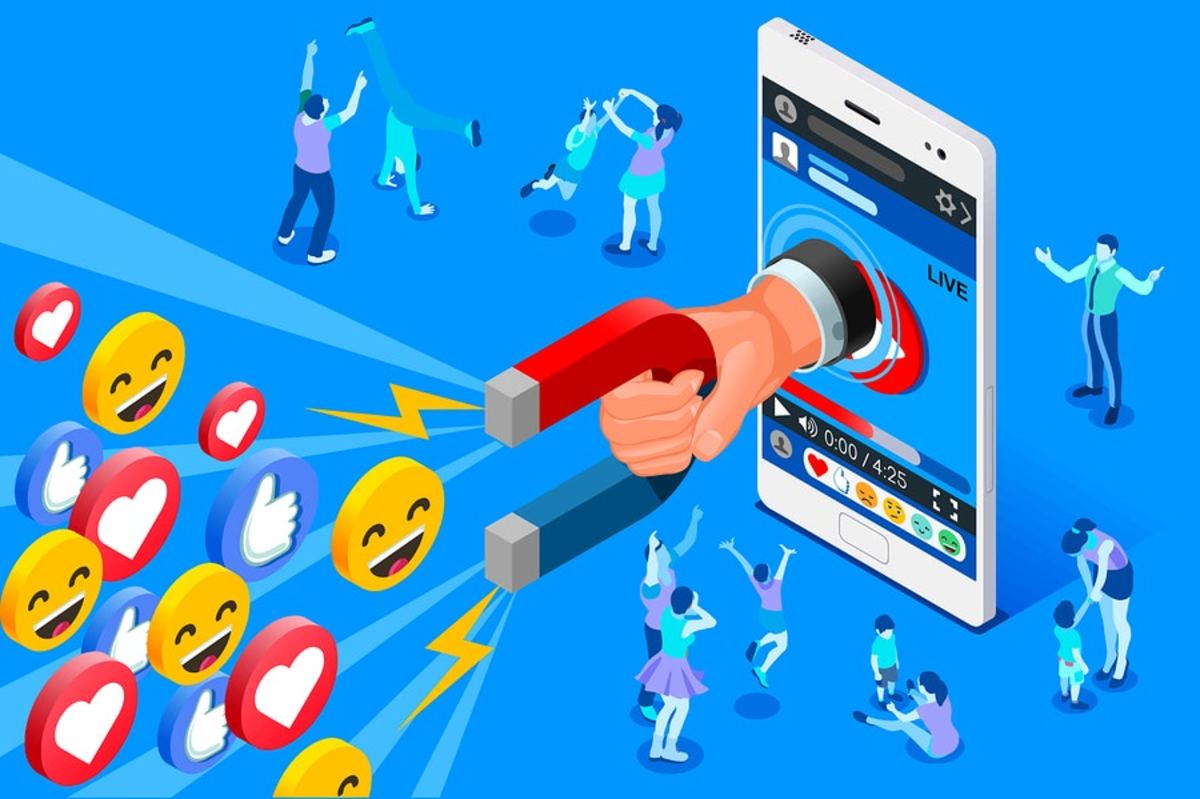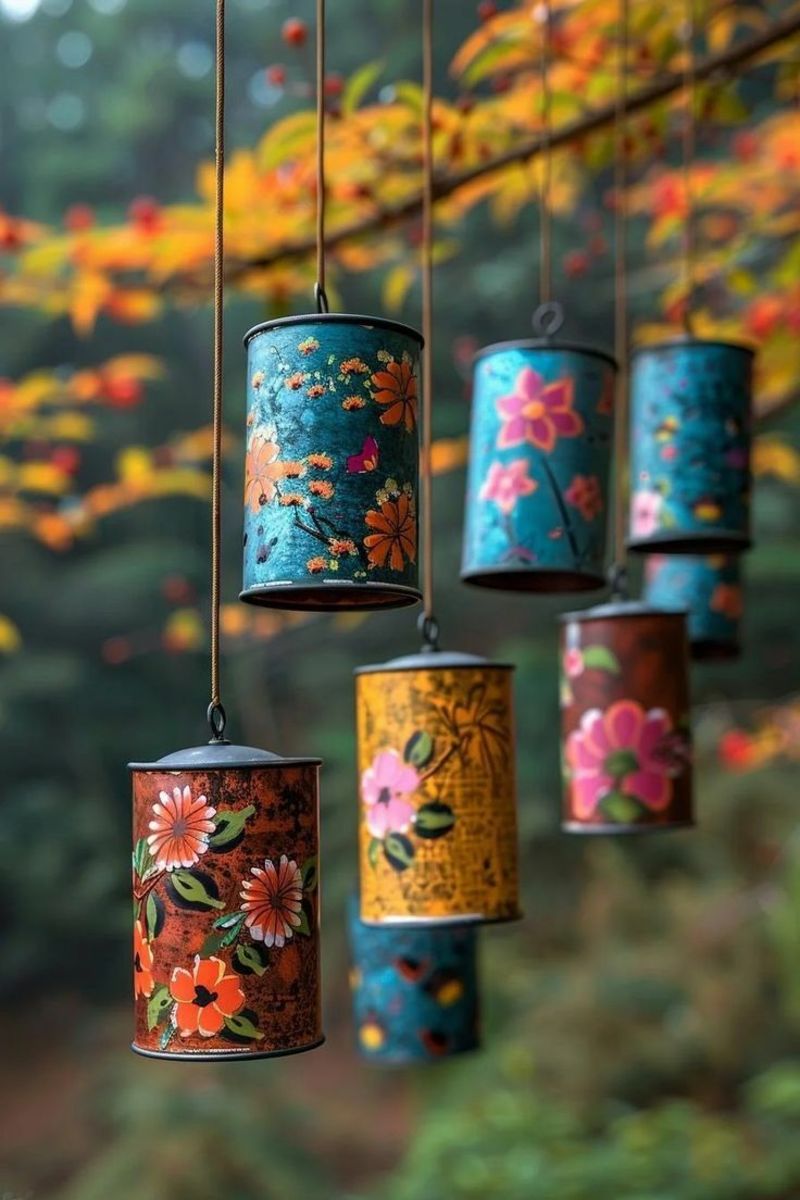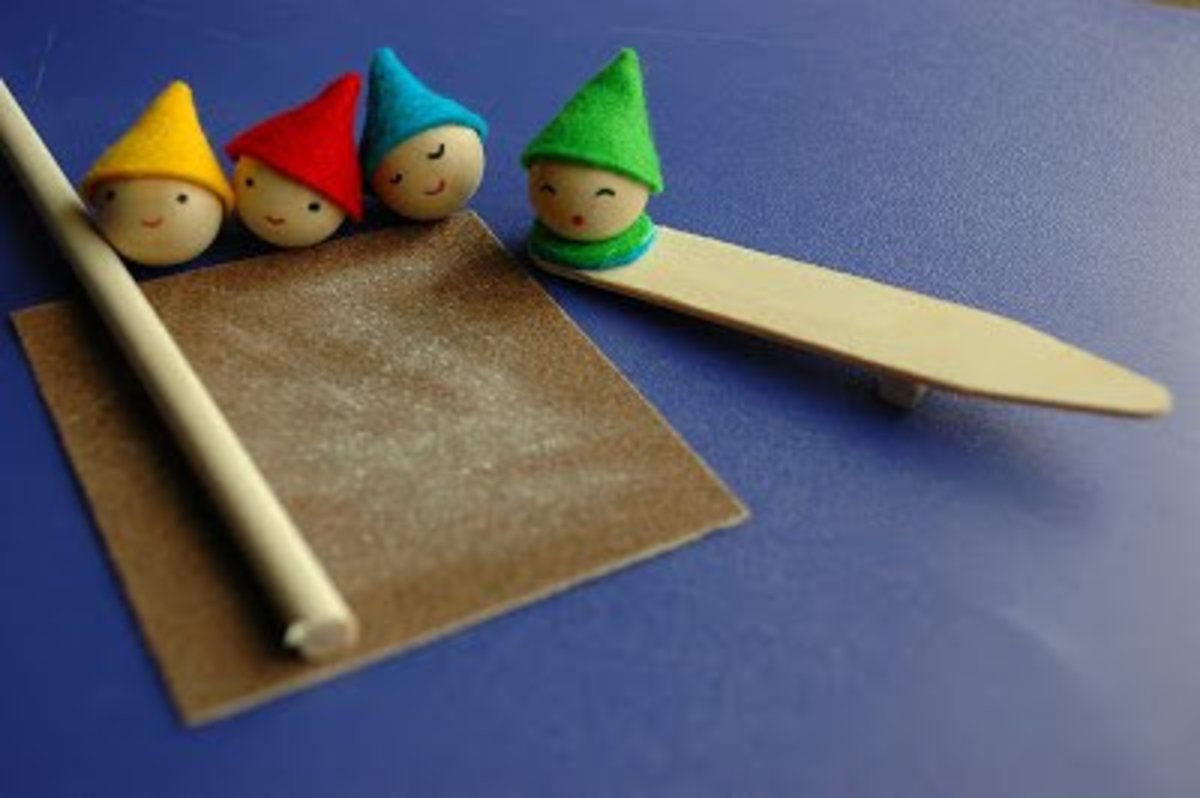Character Design: Instagram as a Feedback Tool
Introduction
Characters are the source of almost any story. They can be seen in books, series, photos, comics, and games and are usually what makes us viewers engage the most with what we are watching, reading or hearing. They make the works they are featured in come alive and pull us into their own world, making us empathize with what they go through. We identify ourselves with characters and are made to care for them or to purposely dislike them. Not only by what they do, but also by the way they look.
While making visual designs for characters, it is of utmost importance to make sure your intentions as a visual designer are communicated to your audience. Do people view the character the way they should view them? Do they understand who they are, even by just seeing them? Having your visual designs tested helps you create a more effective character design that your audience will remember.
In this article, I will show you how you can ideate & test your visual character designs using the modern social media platform Instagram. If you are a character artist looking for ways to test your visual designs and ideas more efficiently, this article is for you.
Before we get started, I would like to point out that there is no right way of approaching any creative process. This is merely my view on the process of character creation and by no means do I enforce fellow artists to do the same. Every creator has their own way of expressing themselves and producing their work and that is exactly what makes this such a wonderful outlet for many artist out there. You can see my insights as a guide, but do not be limited by them.
Offline: Determining Intentions & Creating Parameters
Before we can log in to social media, we still have something to do offline: determining our intentions. Before we start creating concepts, it is important to realize what exactly we want to put into our design. This can still be very general ideas, as further definition of your character comes at a later stage.
Personally I am an artist and designer who usually makes work for a specific IP, meaning my work has to fit within that certain 'brand'/style, but there are also times where I can work freely and use my work to inspire the rest of the team so we can come up with new and innovative concepts. Regardless of which case applies to you, it is important to realize what it is YOU want to achieve during the project you will be working on. Especially when it is a project you will be working on for a longer time period, you probably want to work on something that interests you personally in order to stay motivated. Hence, before starting out, it is useful to determine certain "key points" to guide your design progress. Creating something new can be quite hard if you do not know where exactly you should start, so establishing those key points will help you into a direction without limiting you too much in the ideation phase.
There are two kinds of key points you can determine during this phase:
- What do I HAVE to make? -> Requirements
- What do I WANT to make? -> Wishes
The latter is about where your intrinsic motivation lies, whereas the first is all about extrinsic motivation. Working on projects often means balancing both to come to the optimal situation where both you and your teammates / client are happy with the solution provided. Artists and designers often tend to focus a lot on what is expected of them, which is logical since they work for a certain company. However, this can easily result in them forgetting mostly about what they personally want to do, making them possibly lose their sense of creativity during the process. I have personally struggled with this for three years and I am still trying to balance this out, but setting those separate key points for yourself helps you protect what you want to do. You are not just a production machine, you are a creative with your own voice which cannot be muffled. This is what differentiates an artist from a craftsman.
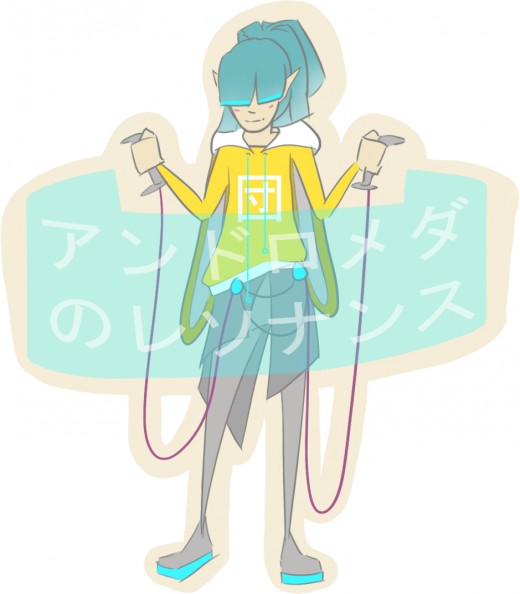
Example: Key Points
For my graduation project I was working on the visual development of two characters, both being completely separate concepts of each other. The first character I created was BUNNY, a young and tomboyish girl of 11 years old who is the drone navigator of a rebel movement within an Asian Cyberpunk setting. This character had a few conditions that had to be met, which can be translated into the following key points:
Requirements:
- Has to fit the Asian Cyberpunk theme.
- Will be a civillian and will serve as the Main Character of the game.
Wishes:
- Keeping the design as simple as possible: Cyberpunk themes always tend to go a tad over the top when it comes to visual design, always leaving me (personally) confused as to what function certain elements serve.
- Creating a design that is both cute and cool, as to create the effect of surprise whenever the character does something that does not match with the usual characteristics of an "innocent kid".
- Incorporating color into the visual design. Cyberpunk themes often depend on darker vibes with a few brightly-saturated highlights and I wanted to explore how much I could do with color. Since I am planning on making a kid, there is quite some room for that.
Now we have established those Wishes & Requirements, we have created parameters to test our designs with. But it is not limited to just that; those parameters are also there to help us compare our vision as a designer to the opinion of the public. How does the audience react? Is this the reaction we are looking for? What is it that makes them react this way? What can we do to enhance the design to get the reaction we want? Or do we need a completely different approach?
Online: Measuring Expectations on Instagram
When working on a product which features a certain theme, the viewers will always have their personal expectations when they are introduced to it. Therefore it is important to be conscious about those expectations when creating your product, so that it matches the 'system' your viewers have in mind when interacting with said product. This is a rule for anything that is designed to serve a specific purpose and is not only something a User Experience Designer does. Every designer does it to a certain degree and for character design this is no difference. So how do you measure this? There certainly are many ways to do so and there is by no means one 'correct' way to do this, but I will share with you what I did. Personally, I am very active on social media. Platforms such as Instagram are very important to me in order to stay in touch with the world and the people in it. Social media makes getting in touch with people a lot easier and being the introverted person I am, I prefer asking people who are already looking at their screen questions instead of approaching people physically to give answers. It is a low-effort method for both my audience and myself which also gives me more results in a shorter timespan.
As a cosplayer myself, I am mostly active on Instagram and I have built up a following of roughly 1.1k since creating my account in September 2015. I figured that I could use this following for my graduation research in the form of creating public questions on my Instagram Story. For those who do not know what an Instagram Story is: it is basically a temporary post that is up for 24 hours and then disappears. It works well for showing things you are doing at that exact moment and are relevant for a short period of time.
Do all those 1.1k people who follow me actually see my story? Not by far. Instagram's algorythm has made it so that accounts with a larger following appear first in their feed, so oftentimes my posts get lost in the large sea of content creation. Approximately 170 - 230 people view my story posts and depending on the post you can expect an engagement count of about 10% if you are lucky. That means that if I am lucky, I get around 20 replies on my Instagram Story questions.
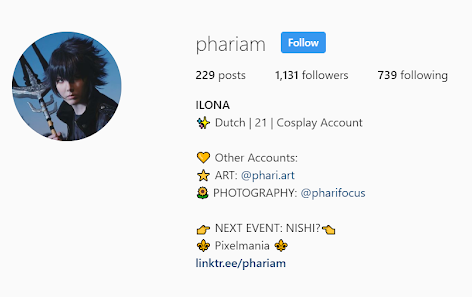
So who is this audience I am reaching? Obviously since I am a cosplayer, I mainly get followed by people who are also into that same hobby. I also post a lot of photography content so people also tend to follow me for that. The people who follow me are all into pop-culture / 'nerd-culture' and stay up-to-date with it. They go to events to meet up with people with fellow interests and that is also how my audience grows bigger. What does this say about my audience? Instagram helps me find out:

When you switch from a personal account to a business account on Instagram, the application gives you statistics on how succesful your posts are, how others interact with your content and who exactly you reach on this platform. Since my follower count can be considered relatively high, it is quite effective asking my following certain things to get a good amount of insights and opinions. Naturally, the outcome would be less in quantity when having a smaller amount of followers, but depending on the kind of information you are looking for it might still be a valid option. In this case I was looking for quite general thoughts and expectations regarding the characters I was creating, thus quantity was a bit more important than quality.
SIDE NOTE: TIMING IS IMPORTANT
When posting on social media, it is important to realize where your audience is based and at what times it is ideal to post in order to reach most of your followers and possibly attract new ones. In all honesty, this something to find out with trial and error. By posting on different times of the day, you can find out when you have the most engagement. Are you based in Europe but are most of your followers based in America? Then it is wise to post at a later time of day to be able to reach your followers. Personally I mostly reach people who are based in The Netherlands and the USA, thus I post at a later time of day to be able to reach both those audiences. My posting schedule is thus consistent between 4-7pm GMT on all social media platforms. Not just Instagram.
When you want to approach your audience to get information from them, it is important to know what exactly you want to get out of it. Different pieces of information require different approaches in order to gain what you are looking for. Does a closed question where the audience only has to pick A or B suffice? Or do you need a more elaborate response to get a deeper insight? Instagram Stories feature different functionalities to find out different pieces of information.
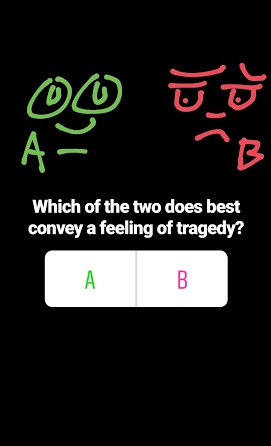
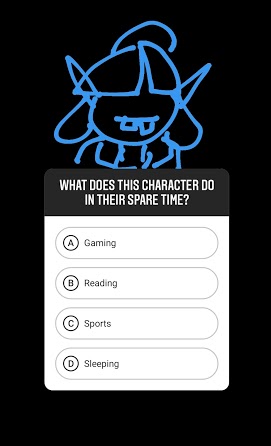
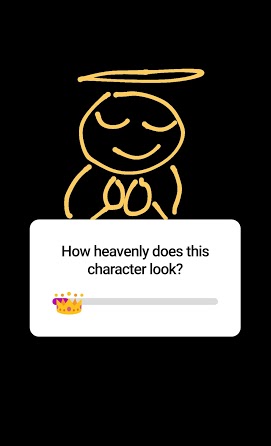

Example: BUNNY
To get started during my project I decided to ask my audience what they associate with certain themes. I did this to get a clear view on the expectations my audience has when thinking of that certain theme, but also to find out interesting views that have not quite been explored yet. Since this was quite a general piece of information I needed, I decided to go and ask my audience an open question.
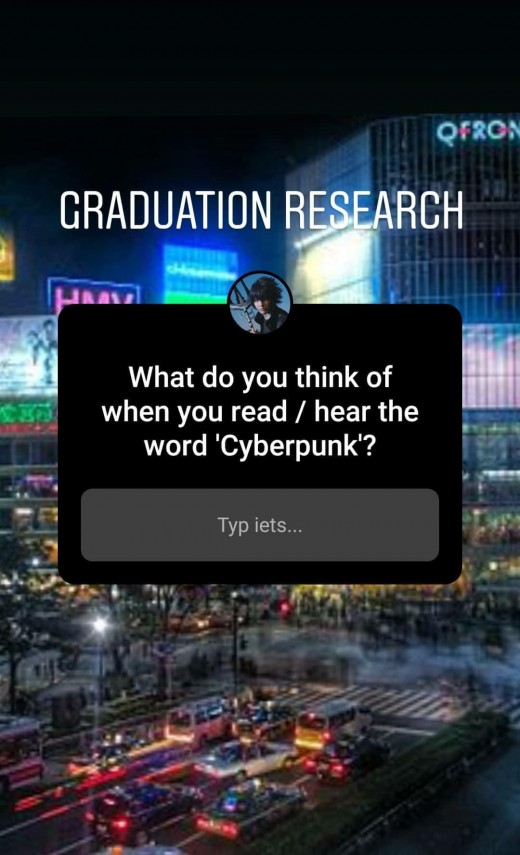
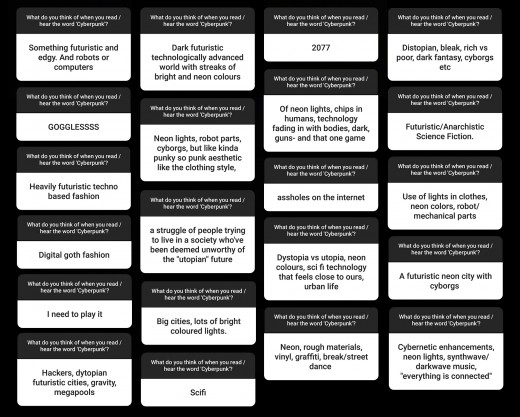
Summary:
- Dystopia
- Futurism / Scifi
- "Cool characters"
- Dark setting
- Neon lights
- Cybernetics
- Hackers
- Big cities
- Urban life
Reflection:
So what did I do with all this? I gathered this information to see what people already expect when thinking about this theme. Knowing this would give me more knowledge about this theme, since I was not quite familiar with it myself yet, but it would also give me more insight in what is generally still missing within this theme. It gave me more visual on possible roads to take. I already knew that the character would be living in an Asian Cyberpunk setting and that they would be the main character. Furthermore, they would be the 'Navigator'- archetype as a drone controller. One thing I noticed about the replies I got is that the general view on Cyberpunk themes is quite dark. Cyberpunk is always about a dystopia in which badass rebels try to make a change in the big urban city they live in. I also noticed that a lot of existing characters within the Cyberpunk scene are usually meant to portray a tough and cool image while being a rebel and I wanted to avoid making what has been made a dozen of times already, thus I decided to take a different approach and create a cute & innocent-looking child who would still screw you up if they were driven to it.
Do you see how effective one single post can be? When you are looking for general thoughts and opinions, you often need to reach as many people as possible. But why would you go through all the effort of making extensive surveys and desperately look around for people to fill those in, if you can use a solution that takes less time and effort for both you and your audience? Now I do have to stress out that the audience I reach and the target audience set for my project happened to overlap, so it was naturally an easy solution. If your target audience is different than the audience you reach, I do not recommend this method.
After gathering all replies, it is wise to make a quick summary of recurring thoughts and opinions. Now you have collected a certain amount of expectations from your audience, you can look back at the requirements and wishes you established as key points at the beginning of your project and reflect on what you can or cannot use for your character design. Do not only look at what is mentioned the most, but also be sure to get a clear view on what is still missing within the pattern you are seeing. This is crucial to find new ideas that have not yet been explored and will greatly enhance the originality of your work.
A short list of questions to ask yourself after asking Instagram is thus:
- General Opinion: What patterns do I see? What is mentioned the most?
- Finding Holes: What is still missing? What would be a unique addition?
- Opposing Opinion: Can I do the opposite of what people expect?
Offline: Concepting
Now we have determined the parameters for our character design and we know what the general expectations of the audience are, it is time to start concepting! I will not go too far into detail here since this all comes down to your inner artist and designer making their own choices. Important to keep in mind is that those parameters and expectations should not limit your design process, but should rather support it and help you make conscious choices.
Example: BUNNY
Requirements:
- Has to fit the Asian Cyberpunk theme.
- Will be a civillian and will serve as the Main Character of the game.
Wishes:
- Keeping the design as simple as possible: Cyberpunk themes always tend to go a tad over the top when it comes to visual design, always leaving me (personally) confused as to what function certain elements serve.
- Creating a design that is both cute and cool, as to create the effect of surprise whenever the character does something that does not match with the usual characteristics of an "innocent kid".
- Incorporating color into the visual design. Cyberpunk themes often depend on darker vibes with a few brightly-saturated highlights and I wanted to explore how much I could do with color. Since I am planning on making a kid, there is quite some room for that.
Audience Expectations:
- Dystopia
- Futurism / Scifi
- "Cool characters"
- Dark setting
- Neon lights
- Cybernetics
- Hackers
- Big cities
- Urban life
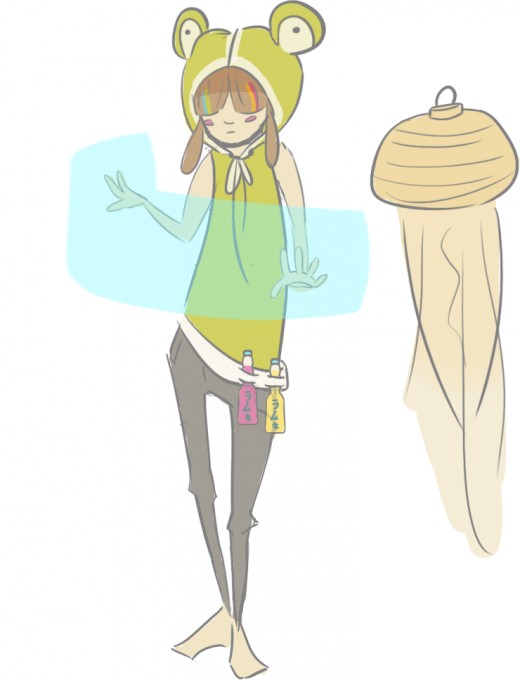
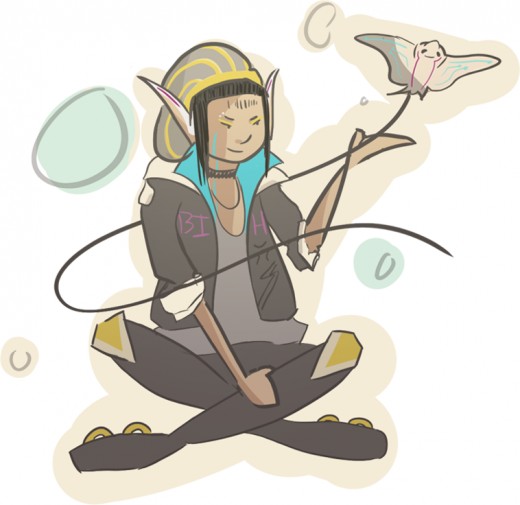

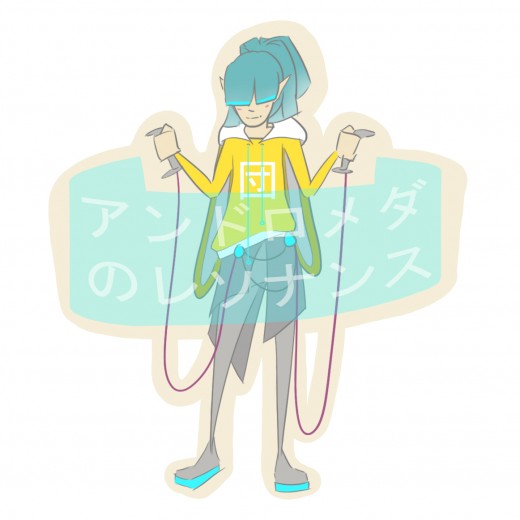
By constantly looking back at the parameters and expectations, the concepting phase eventually resulted in the last character design, which became the design I chose to translate into a 3D model. I made this choice myself and decided not to let social media choose for me. Although social media might be a nice tool to measure which design people would like the most, you as an artist should always make the final choices to avoid having your vision blurred. Do not let others tell you what to do.
Online: Testing & Verification on Instagram
During the production phase, it is important to keep testing your work to see if the audience understands what you are working on. Whether it is a 2D or 3D project you are working on, be sure to show results to your audience as early as possible. With this I mean images that already represent the character you are making. Put time into creating decent shareable images for your audience so you can get clear replies and take this back to Instagram Stories.
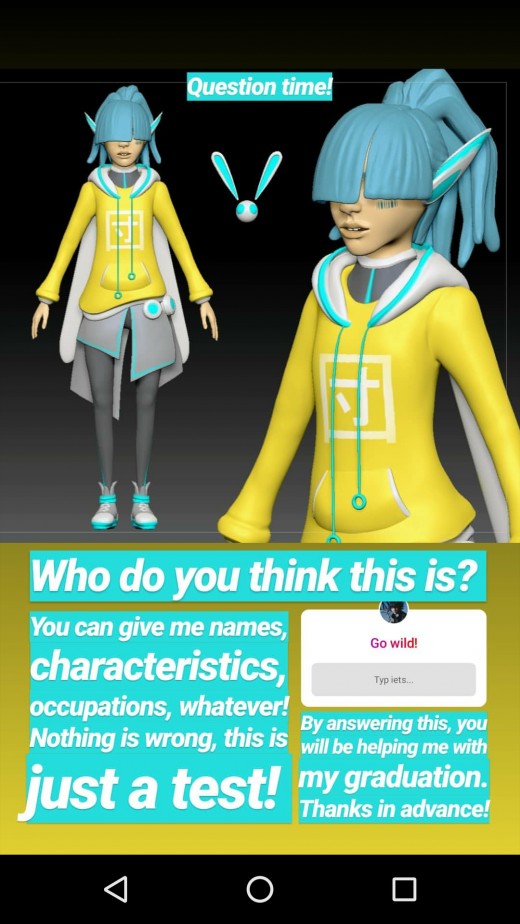
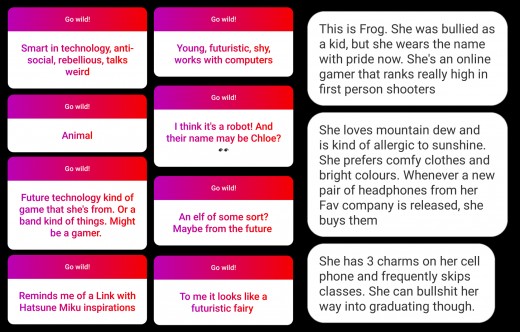
Here we do the exact same thing as before, where we ask the audience an open question and let them answer as much as they want. The first thing you notice is that there are far less replies than with the previous prompt. This is because we are asking a verifying question which might make the viewers think their answer might be wrong. Always be sure to clarify that no answer is a wrong answer and that all feedback is welcome. I personally got super excited about the messages on the right because someone took the time to make an in-depth description of BUNNY that was quite on point. There will always be answers that do not quite match your intention, but do not ignore them! Consider this input and see if it is useful for your design, but stay critical as well.
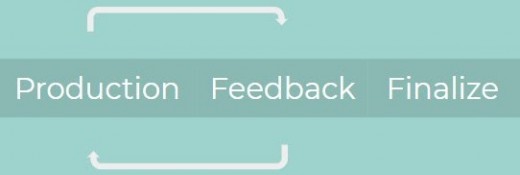
Continuously testing and verifying your work will lead to a healthy iterative process which will enhance your visual design. As visual designers, we might think our work is never done and that there is always something that can be improved. Whereas this might be true, it is also important to know when to finalize our work and call it done. By getting verification from our audience, we gradually learn when to stop iterating and work with what we have, so we will not end up in a never-ending design and/or production cycle.
Conclusion
During this article we have taken a look at how we can use Instagram to get valuable information from our audience regarding what they expect of certain themes and how they would define designs that are presented to them. As stated in the introduction of this article, there is absolutely no "right way" of approaching a creative process and regarding of what your situation is, this method may or may not work for you. Some important facts to consider are thus:
Pros:
- Low-effort to set up & answer.
- Quick results (< 24h).
- Lots of different functionalities to get the information you need.
- Since you have to tap through Instagram Stories, people are more likely to see the post instead of scrolling over it. This results in plenty of replies from the audience.
- Feedback from "outside your bubble" gives refreshing insights.
Cons:
- Not always the target audience you are looking for, so you have to stick with very simple and general questions.
- It might occur that when testing with images, a mobile platform may have a display that is too small for testing properly.
- This method only works when you already have a following. Chance is big you should have started your account years ago.
In our modern society, it is hard to imagine social media not playing a part in people's lives. We are often checking our phones for the latest updates on people we follow or we open up our computer to see what friends and family are up to. With such an active and approachable usage of social networking, it is interesting to consider using it for more serious goals. Where businesses are already using it for promotional purposes, we as visual designers have found ourselves an interesting method to communicate with our audience to get useful information out of them in a very rapid and low-effort manner. Knowing your audience and testing your designs on them is important. You have to be aware of external expectations when working on a project and see if you can use it in some way to enhance it. Measuring those expectations and verifying your designs can be done countless of way, but I genuinely believe that social media is often ignored. However, in this day and age where social media has become one of the most prominent forms of media, let's try and embrace it.


